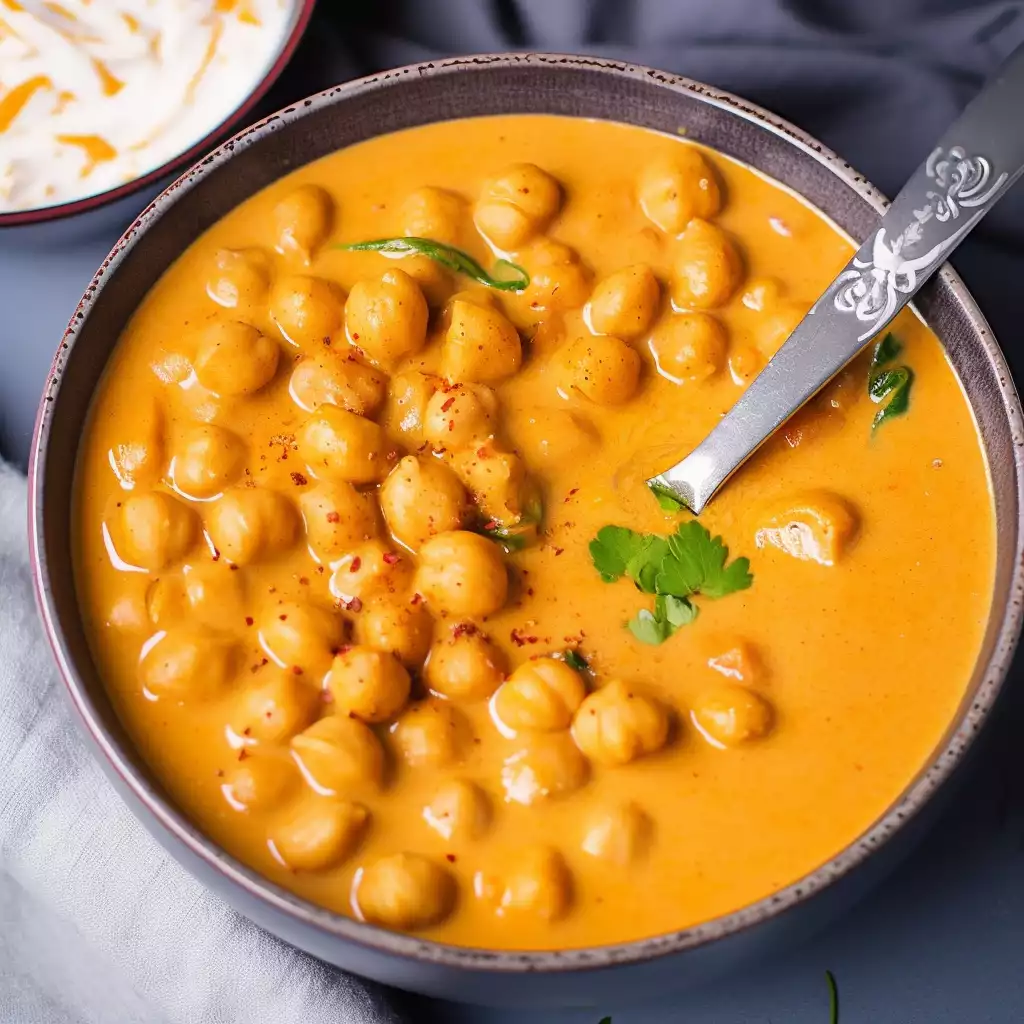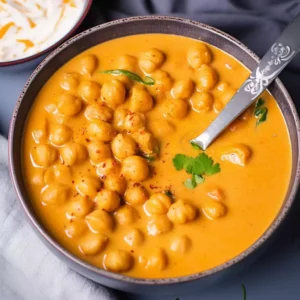
Craving a comforting and flavorful dish that’s both creamy and packed with plant-based protein? Look no further than this inviting creation: Creamy Coconut Chickpea Curry.
Originating from the vibrant culinary landscape of South Asia, this dish marries the rich creaminess of coconut milk with the robust flavors of curry spices, creating a symphony of tastes that will tantalize your taste buds.
While it may sound complex, fear not, as this recipe is designed for beginner cooks eager to explore the world of homemade curries. With simple steps and readily available ingredients, you’ll soon be whipping up this delightful curry to impress friends and family alike.
Expert Tip: Ensure to marinate the chicken for at least 30 minutes to allow the flavors to penetrate the meat thoroughly.
Oil: Used for sautéing the aromatics and building flavor in the curry.
Onion: Adds sweetness and depth of flavor to the curry base.
Tomatoes: Provide acidity and texture to the curry, balancing the richness of coconut milk.
Garlic: Infuses the curry with its aromatic flavor, enhancing overall taste.
Ginger: Offers warmth and a hint of spice to complement the other ingredients.
Curry Powder: A blend of spices that brings complexity and depth to the curry.
Cumin Powder: Adds earthiness and warmth to the dish.
Coriander Powder: Imparts a citrusy and slightly sweet flavor to the curry.
Turmeric: Lends vibrant color and a subtle earthy taste to the dish.
Cayenne Pepper: Provides heat and a kick of spice, adjustable to personal preference.
Chickpeas: The hearty protein source that makes this dish satisfying and filling.
Coconut Milk: The star ingredient that lends creamy richness and sweetness to the curry.
Salt: Enhances the flavors of the dish and balances the overall taste.
Black Pepper: Adds a hint of heat and depth to the curry.
Coriander: Fresh cilantro leaves for garnish, adding a pop of color and freshness to the finished dish.
Expert Tip: Caramelize the onions well before adding other ingredients to enhance the depth of flavor in the curry.
Expert Tip: Garnish with fresh coriander leaves just before serving to add a burst of freshness to the dish.
The spiciness of the curry can be adjusted to your preference by varying the amount of cayenne pepper used. Start with a small amount and add more gradually until you reach your desired level of heat.
Yes, canned chickpeas work well in this recipe. Just make sure to drain and rinse them thoroughly before adding them to the curry.
Absolutely! This curry actually tastes even better the next day as the flavors have had time to meld together. Simply store it in an airtight container in the refrigerator and reheat before serving.
Yes, this creamy coconut chickpea curry is both vegetarian and vegan-friendly, making it a great option for plant-based diets.
Yes, this curry freezes well. Allow it to cool completely before transferring it to freezer-safe containers. It can be stored in the freezer for up to 3 months. Thaw overnight in the refrigerator before reheating.
Here are some more recipes for you to enjoy! If you my recipes don’t forget to rate and leave a comment.
If you have any recipe suggestions, please do not hesitate to ask me. A great way to stay in contact with me is through Instagram, Facebook, Twitter and YouTube. Don’t forget to tag me @CookwithNabeela in your recipe photos!

Subscribe now to receive my latest recipes directly in your inbox. Stay up-to-date and never miss out!

I love to cook! I want to share with you my favourite, delicious family-friendly recipes. I want to inspire you to create fantastic food for your family every day.
Add your first comment to this post